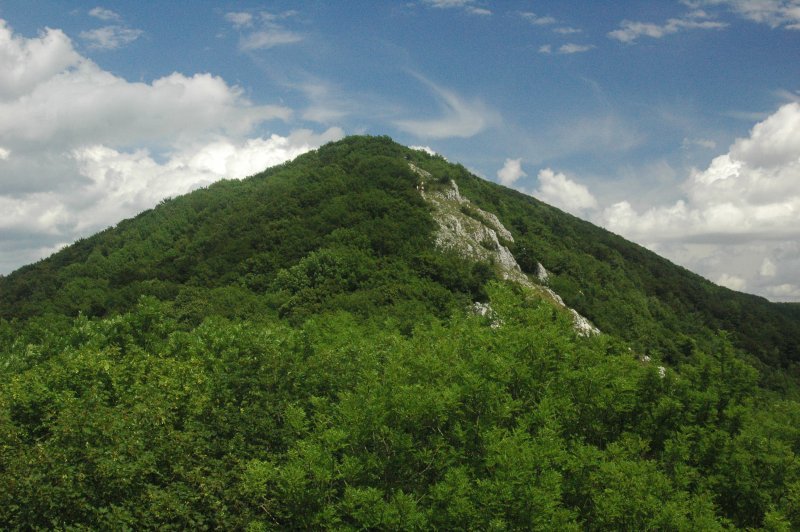|
Záruby
Záruby is the highest hill of the Little Carpathians. It is located at an altitude of 768 m, near the village of Smolenice Smolenice ( hu, Szomolány; german: Smolenitz) is a village and municipality of Trnava District in the Trnava Region of Slovakia, on the foothills of the Little Carpathians. It is 60 km northeast of Bratislava and 25 km northwest of Trnava. The .... Image:Záruby.JPG, Záruby as seen from the west Image:Zaruby peak.jpg, Summit from Ostrý Kameň Castle Image:Slovakia Smolenice Zaruby1.JPG, Záruby from Vlčiareň Mountains of Slovakia Mountains of the Western Carpathians {{Slovakia-geo-stub ... [...More Info...] [...Related Items...] OR: [Wikipedia] [Google] [Baidu] |
Little Carpathians
The Little Carpathians (also: ''Lesser Carpathians'', sk, Malé Karpaty; german: Kleine Karpaten; hu, Kis-Kárpátok) are a low, about 100 km long, mountain range, part of the Carpathian Mountains. The mountains are situated in Western Slovakia, covering the area from Bratislava to Nové Mesto nad Váhom, and northeastern Austria, where a very small part called Hundsheimer Berge (or Hainburger Berge) is located south of the Devín Gate. The Little Carpathians are bordered by Záhorie Lowland in the west and the Danubian Lowland in the east. In 1976, the Little Carpathians were declared a protected area under the name Little Carpathians Protected Landscape Area, covering . The area is rich in flora and fauna diversity and contains numerous castles, most notably the Bratislava Castle, and caves. Driny is the only cave open to the public. The three highest mountains are Záruby at , Vysoká at , and Vápenná at . Description Geomorphologically, the Little Carpathians b ... [...More Info...] [...Related Items...] OR: [Wikipedia] [Google] [Baidu] |
Smolenice
Smolenice ( hu, Szomolány; german: Smolenitz) is a village and municipality of Trnava District in the Trnava Region of Slovakia, on the foothills of the Little Carpathians. It is 60 km northeast of Bratislava and 25 km northwest of Trnava. The village is made of two parts, Smolenice and ''Smolenická Nová Ves'' (formerly ''Neštich''). History The location of Smolenice at the edge of the basin of Trnava, easy access, and fertility facilitated settlement of the land in the Paleolithic era. There are only occasional archeological discoveries from this time, however, with more coming from the Neolithic era. The most significant period was the transition between the Bronze and Iron Ages, when the Celts around the 6th century BC had an oppidum above the village. There was a settlement on the same place during the Great Moravia period. From the 10th century it was part of the Kingdom of Hungary. The village was first mentioned in 1256 under name ''villa Solmus'', though the settleme ... [...More Info...] [...Related Items...] OR: [Wikipedia] [Google] [Baidu] |
Ostrý Kameň Castle
Ostrý Kameň Castle (german: Scharfenstein; hu, Éleskő) is a ruined castle in the municipality of Buková in the Trnava region of Slovakia. History The castle was first mentioned in 1273. Although the origins of the Ostrý Kameň castle are not clear, it is believed that it was built in the 13th century. The goal of building this royal border fort on the western border of the Hungarian Kingdom was the protection of the important trade route connecting Buda with Prague in the Middle Ages, the so-called ''Czech Road''. This trading route passed the barrier that the Little Carpathians posed via the depression of the valley A valley is an elongated low area often running between hills or mountains, which will typically contain a river or stream running from one end to the other. Most valleys are formed by erosion of the land surface by rivers or streams ove ... Bukovská Brázda situated directly below the castle. Originally a royal property, the castle was passed i ... [...More Info...] [...Related Items...] OR: [Wikipedia] [Google] [Baidu] |
Slovakia
Slovakia (; sk, Slovensko ), officially the Slovak Republic ( sk, Slovenská republika, links=no ), is a landlocked country in Central Europe. It is bordered by Poland to the north, Ukraine to the east, Hungary to the south, Austria to the southwest, and the Czech Republic to the northwest. Slovakia's mostly mountainous territory spans about , with a population of over 5.4 million. The capital and largest city is Bratislava, while the second largest city is Košice. The Slavs arrived in the territory of present-day Slovakia in the fifth and sixth centuries. In the seventh century, they played a significant role in the creation of Samo's Empire. In the ninth century, they established the Principality of Nitra, which was later conquered by the Principality of Moravia to establish Great Moravia. In the 10th century, after the dissolution of Great Moravia, the territory was integrated into the Principality of Hungary, which then became the Kingdom of Hungary in 1000. In 1241 a ... [...More Info...] [...Related Items...] OR: [Wikipedia] [Google] [Baidu] |
Mountains Of Slovakia
A mountain is an elevated portion of the Earth's crust, generally with steep sides that show significant exposed bedrock. Although definitions vary, a mountain may differ from a plateau in having a limited summit area, and is usually higher than a hill, typically rising at least 300 metres (1,000 feet) above the surrounding land. A few mountains are isolated summits, but most occur in mountain ranges. Mountains are formed through tectonic forces, erosion, or volcanism, which act on time scales of up to tens of millions of years. Once mountain building ceases, mountains are slowly leveled through the action of weathering, through slumping and other forms of mass wasting, as well as through erosion by rivers and glaciers. High elevations on mountains produce colder climates than at sea level at similar latitude. These colder climates strongly affect the ecosystems of mountains: different elevations have different plants and animals. Because of the less hospitable terrain and ... [...More Info...] [...Related Items...] OR: [Wikipedia] [Google] [Baidu] |


